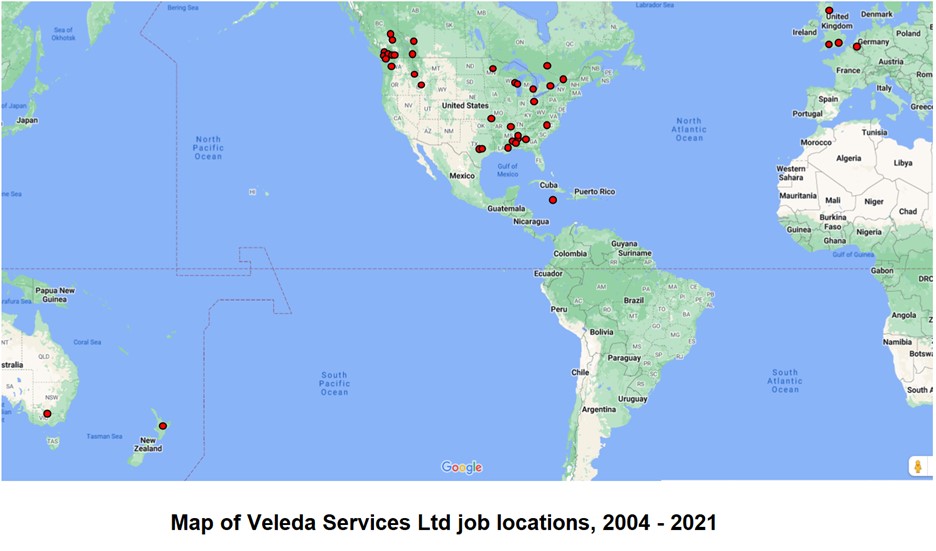Most companies charge all transactions related to maintenance work to work orders. These transactions include purchase requisitions and purchase orders for materials and contract labour, Storeroom issues and maintenance labour.
This article questions the value of using work orders to collect and report all maintenance costs andrecommends a more practical approach, but first lets look at the reason for having work orders at all.
Work orders are used to:
– Provide a record of a job that will be done some time in the future so it is not forgotten.
– Provide a reference so that all materials, tools and other resources for the job can be assembled and managed.
– Allow all job information to be properly filed.
– Allow management of lists of work, for setting work priorities, scheduling and shutdown management.
– Maintain work history for assets.
– Build standard instructions for future work.
– Record and manage job costs.
– And above all, to communicate to tradespeople the action they need to take to address the problem that was identified by the person who entered the work request.
These all have value, but they come with the cost of administering a work order system, which is not insignificant.
An alternative, used by some successful companies, is to use work orders only for those jobs which do not need to be done immediately and for which detailed instructions are required. All routine maintenance transactions, both for work for which a work order is needed and for work where a work order is not necessary, are charged NOT to the work order number but to the equipment number (sometimes called “asset number” or, more accurately “asset location number”).
Charging transactions to equipment numbers has some significant advantages, including:
– it eliminates the need for work orders for small jobs which must be done immediately.
– it eliminates the need for “standing” or “blanket” work orders, which are commonly used for small jobs. Standing work orders account for a significant part (I’ve seen up to 60%) of all maintenance spending in some organizations.
– it provides much better records for all transactions for small jobs, by avoiding the practice of hiding transactions in standing work orders.
– it removes the temptation to use “any old open work order” for small or urgent jobs.
– it improves the response time in the event of a breakdown.
– it avoids the need for tradespeople (and others) to remember constantly-changing work order numbers
– and, importantly, it relieves Planners of the burdensome and unproductive “paper pushing” of work orders which do not justify planning. I have seen sites where processing (not planning) work orders in cumbersome maintenance computer systems leaves Planners with virtually no time for planning.
Consider a typical maintenance computer system, which allows the charging of maintenance transactions to equipment numbers (and some do not). Entering equipment numbers instead of work order numbers, for a typical transaction, the system will record against the equipment:
– any Stores issues
– any purchases, including contractors
– all labour charges from time sheets (or equivalent, and only if it is of value to record this information – see “Why bother to record maintenance costs?“)
– the date and time of each transaction
– the name of the person who entered the transaction request into the system (by their log-in ID).
This is a significant amount of information, and it can be argued that the resulting records are likely to be more accurate and complete than those resulting from charging all transactions to work orders.
Of course, for those jobs which justify a work order, these work orders must contain all the detailed planning and scheduling information necessary for efficient work execution. Where it is important to record the details of a job where transactions are charged to equipment numbers, this information can still be entered in the equipment record, and the discipline to do this is about the same as it is where the transactions are charged to the work order. And where the work is a part of a capital or other special project, then the equipment number must be over-ridden with the correct account number, just as it must be where work is charged to work orders.
Some compromises are also worth considering, such as charging larger jobs to work order numbers and small or immediate work to equipment numbers, and a managed version of this combination would be my personal preference. Whichever system or combination of systems is used, the maintenance supervisor must ensure that all tradespeople use the correct numbers for all transactions. Charging to equipment numbers makes this discipline easier, because experienced supervisors will recognize many equipment numbers.
Where the maintenance computer system does not allow charging of maintenance transactions to equipment numbers, a “work around” that has been used is to enter a standing work order against each item of equipment, and use that number for small and immediate jobs. This entails a considerable amount of work and unless the system allows the work order number to be the same as, or include the equipment number, it adds one more series of numbers that need to be remembered. It is much more sensible to just select a system that has the flexibility to allow either process to be used.
Some would argue that charging transactions to equipment numbers does not allow the analysis that is made possible through the use of the various fields that are included in the work order database, such as the urgency of the work, reason for the work, etc. My observation has been that such analysis is hardly ever done, and the most important record of equipment problems that affect production are, and should be, in the reliability tracking system (see “Measuring reliability“).
Where accounting practices (e.g. in some publicly-funded institutions) require that different accounts are used for improvements (“redesign”) and for repairs, inspection or servicing (“maintenance”), then charging to equipment numbers is still possible, as long as each transaction also includes a code to designate it as maintenance or redesign (see “What is ‘Maintenance’?“). A similar code could be used for other work which has special significance, such as safety-related jobs. Of course, this needs a flexible maintenance computer system that will allow this kind of sensible approach to database management.
This is offered as food for thought, but after many years of managing maintenance and observing industrial and institutional maintenance management processes I firmly believe that the value derived from charging every little job to a work order comes nowhere near to covering the resulting administrative costs, not to mention the opportunity cost if it limits the detailed planning that can be done. Work orders should be used only for those jobs where the information in the list at the beginning of this article is of value, and the work order transactions may still be charged to equipment numbers.
To return to the “Articles” index, click here.
© Veleda Services Ltd
Don Armstrong, P. Eng, President








